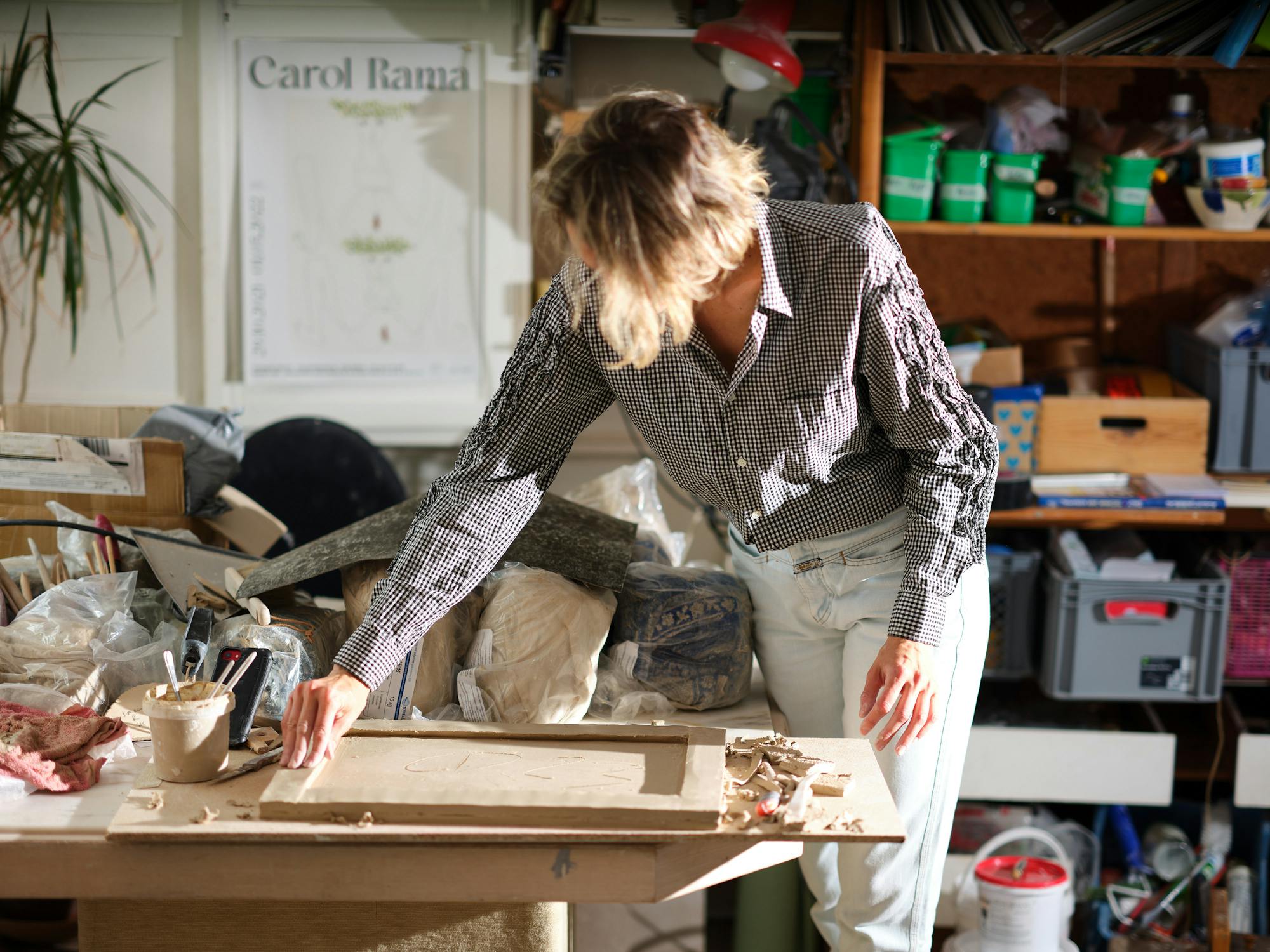Ceramic Artist Charlotte Dualé invited us to her studio in Treptow to talk about her process.

"What I like most about working with clay is the thin line between control and surrender."
Kemmler Foundation: Could you tell us a bit about your evolution as an artist?
Charlotte Dualé: After studying visual communication in Paris I started to work with photography. A few years into this I had an encounter with the drawings of Hans Schimansky who was a teacher at the Weißensee art school in Berlin at the time. Seeing his works sparked my wish to study with him - something I was lucky enough to begin soon after. Starting with drawing it didn’t take long before I discovered ceramics during my studies.
What is your specific experience with clay as a medium and how would you describe your working process today?
What I like most about working with clay is the thin line between control and surrender. You can have a precise plan for what you want to achieve but then you have to let go and experience what the transformative power of the fire does to the work. I’m constantly learning the limits of the will in a certain way. The materiality of the clay has its own rules which I had to learn to respect and integrate into the work. To me, the plasticity - up to a certain point - stands for the capacity of the human body and mind to adapt, change and reorganize in response to experience, trauma and external influence.
I’m constantly working and most of the time on several pieces simultaneously. The studio is a kind of organism that continuously grows and demands regular attention. I also clean a lot. Cleaning and clearing the studio space is as important as the gesture of creating the pieces. To me all gestures are equally important, and necessary.


"The ideal architecture I attempted to create deformed within the kiln and the glaze ended up rather uneven. "
How did you approach a "sense of Utopia“ in the specific shelf you made for Kemmler Foundation?
Utopia – in its original sense - refers to an external goal, distant in a rather abstract realm of time and place. It pursues the idea of an harmonious and organized existence for the human being, achieved by architectural aspirations such as urban planning and the establishment of societal structures. This concept emphasizes a strong inclination towards order, the arrangement of societies and the control of human affairs, shielded from external influences and disconnected from reality.
Where did these ideas take you?
When I tried to translate this concept into clay the outcome ultimately revealed a profound truth: the ideal architecture I attempted to create deformed within the kiln and the glaze ended up rather uneven. To me this process illustrates the disparity between concept and tangible reality that occurs when we try to manifest Utopia. I would say, the shelf – an artwork I call “Hey Moon” - talks about this experience. Throughout the composition fragments of the human body emerge sporadically, embedded within a grid-like architectural structure that is formed by the repetition of tiles.


As you know Kemmler Foundation is invested in utopian visions and ideas. We started collecting books and publications that deal with these topics which will be placed on the shelf you made. Which book or publication would you add as an essential part to this library and how does it relate to your work?
I recommend the book "Les Guerilleres" by Monique Wittig to be part of the Utopian Library. I believe it's a powerful exploration of the concept of Utopia. In her book Wittig describes a society that is not a typical utopian society: there is war, a lack of stability, bodies are noisy, in motion, disruptive. Wittig replaces the universal "ils" in French that stands for “they” - but is also the plural of "masculin" - with "elles" the feminine plural thus creating a universalization of the feminine. This enables the existence of Utopia within the framework of the text, a kind of concrete Utopia, one might say.